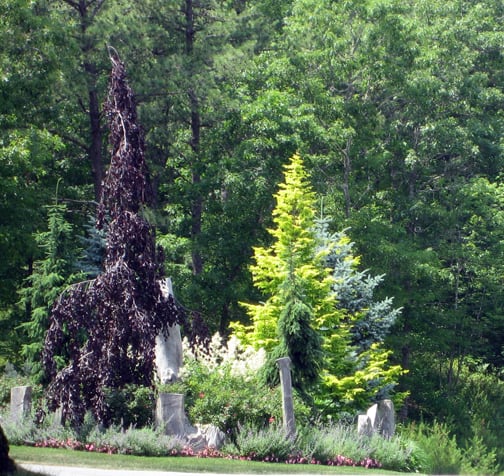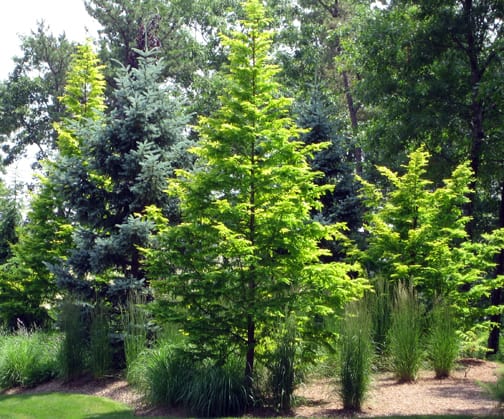Report From PIA – June 24
On my way to a consultation today I passed a triangle planting that caught my eye. First, my attention was captured because there were unusual, specimen trees in this roadside bed, and secondly because there were too many unusual, specimen trees in this area.
One definition of a specimen plant is, “A well-grown plant placed on its own in a prominent position where it can develop fully and be admired as a solo performer.” This is pretty complete, but if I could add anything to this explanation it would be that a specimen plant is often used because its form or foliage color are distinctive.
A key part of the description above is that the plant is placed on its own, “to be admired as a solo performer.” We want these plants to stand as individuals because they bring such presence, such a unique spirit to the location that to place others there would dilute the experience.
While I was pleased that those who planted this side-of-the-road bed used some not-often-chosen plants, they used several of these so called specimen plants, and crammed them all in together.
It’s too bad; these plants will get larger and larger, and more and more crowded. It’s a shame because each of them is so distinctive that to place them together diminishes the power that they have.
Too much of a good thing, I think as I snap the photos and drive on.
Sometimes more is more, and sometimes more is less. The key is to recognize and act on the distinction.



